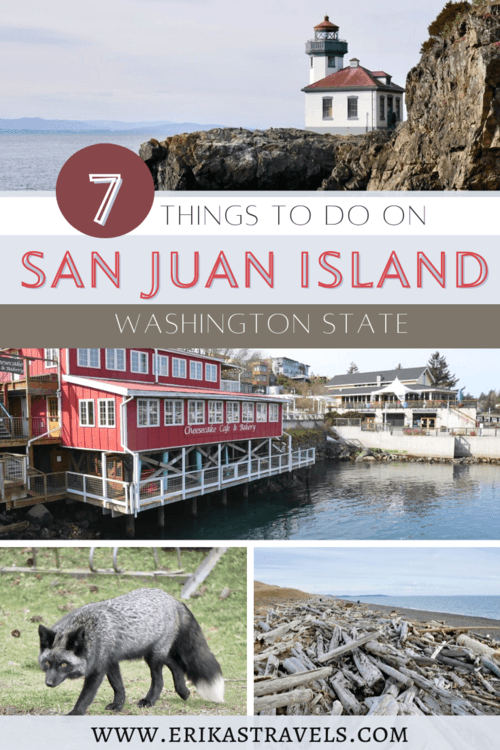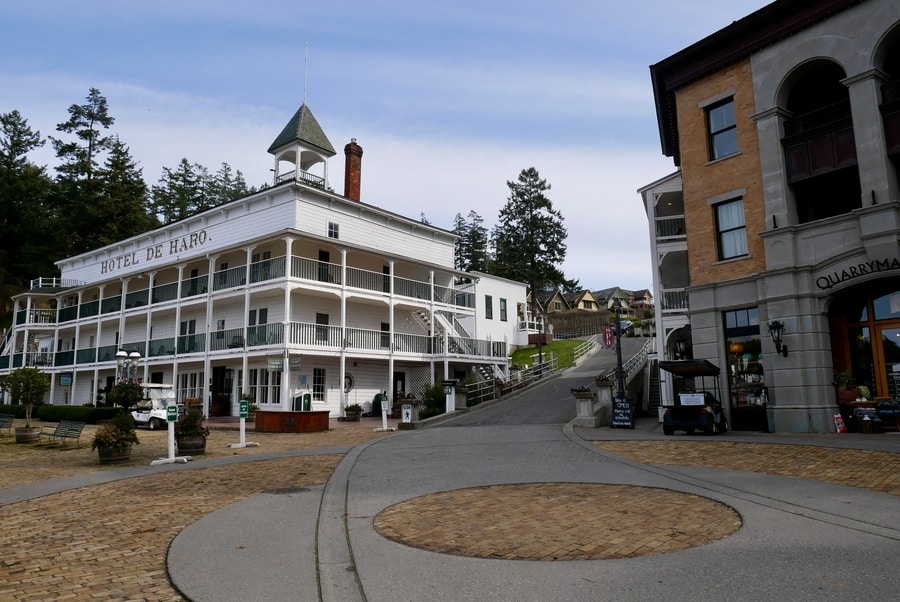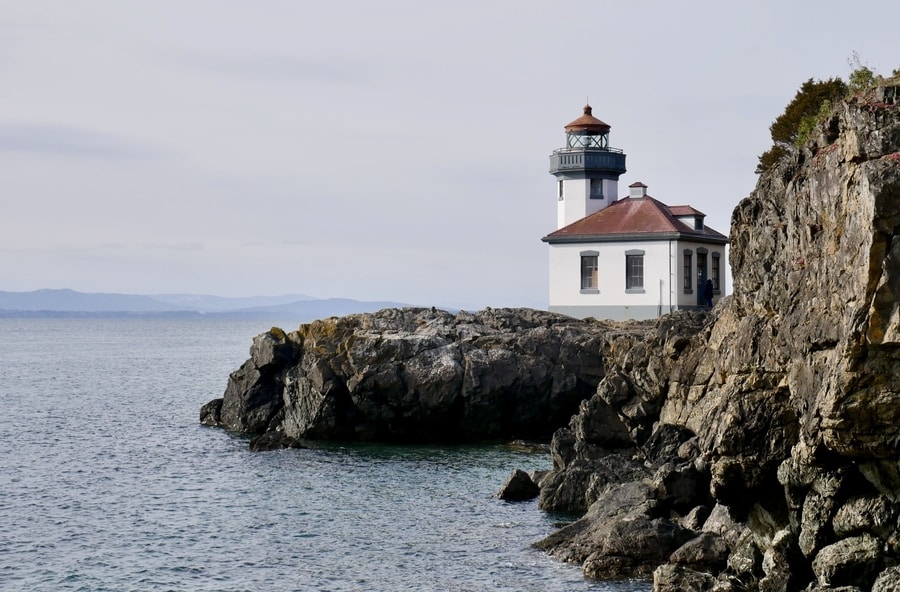
6 Awesome Things to Do on San Juan Island
San Juan Island is one of Washington State’s favorite summer destinations. Situated within eyeshot of Canada in the northern Puget Sound, the fleck of emerald land defies the hustle and bustle of nearby Seattle.
On San Juan Island, the pace of daily life slows to a peaceful amble. It is the type of destination that lures relaxation-seekers and nature-lovers. The type of place where lapping waves and cooing seabirds act as a soundtrack to the scenery.
Among its eclectic mix of things to do, the island boasts natural, artistic and historical attractions. On our San Juan Islands day trip, Dan and I discovered a place rich with historic lighthouses, abundant wildlife, meandering hiking trails, and one of the most bizarre and oft-forgotten war histories in the United States.
SAN JUAN ISLAND ACTIVITIES AND ATTRACTIONS
San Juan is the most populous island in the eponymous San Juan Islands National Monument. The three other inhabited islands include bike-friendly Lopez, tiny Shaw, and beloved Orcas.
With the exception of Shaw Island, the San Juans have become some of Washington State’s most popular tourist destinations.
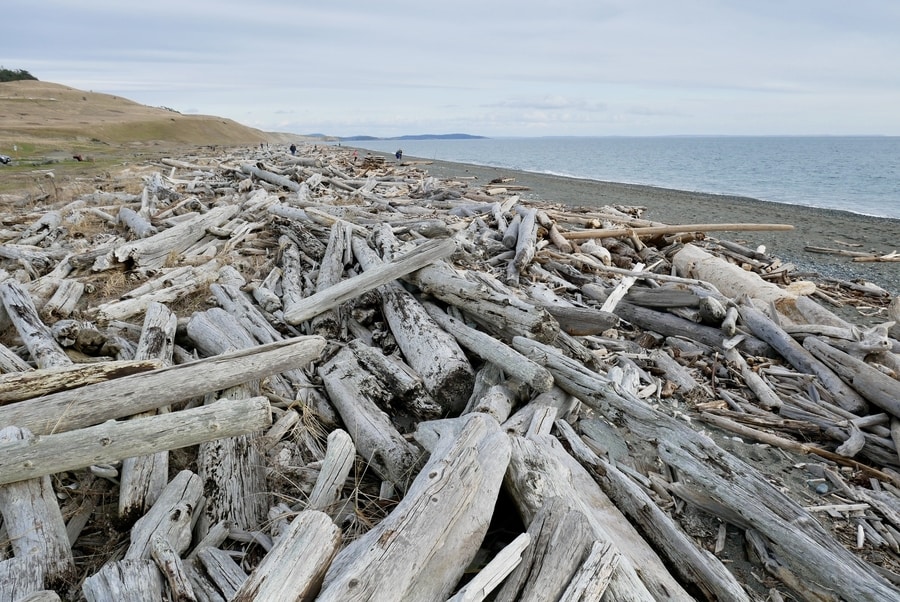
There are plenty of educational and quirky things to do on San Juan Island. Like its neighbors in the northern Puget Sound, San Juan is most known for its laidback vibe and nearby nature. Its abundant attractions include bucolic countryside, a photogenic shoreline, and art-filled public spaces.
1. EXPLORE FRIDAY HARBOR
Friday Harbor is the only town of significant size in Washington’s San Juan Islands. A low-key village of about 2,000 permanent residents, it is full of eateries, art galleries, and boutiques. Many consider Friday Harbor to be among Washington’s prettiest towns.
Dan and I spent about an hour walking around Friday Harbor during our San Juan day trip. The seaside town contains a refreshing lack of chain stores and fast food restaurants. Friday Harbor’s extensive collection of mom-and-pop shops give it an intimate community-focused appeal.
We especially enjoyed peeking into art galleries and getting pastries at Cafe Demeter.
Friday Harbor’s cultural amenities include the Whale Museum, the San Juan Islands Museum of Art, the San Juan Community Theatre, and the San Juan Historical Museum.
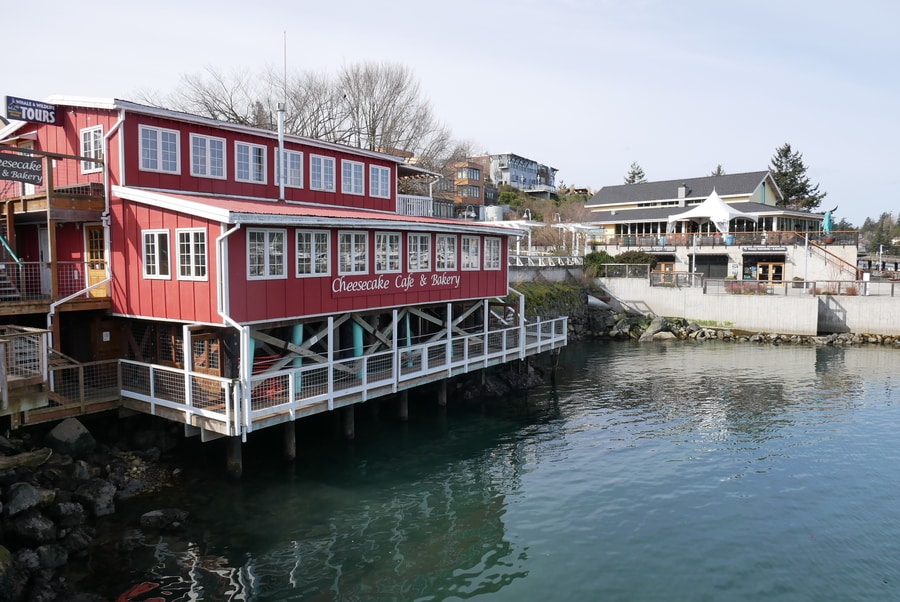
Beyond the outskirts of town, idyllic landscapes unfold—showcasing wineries, cow-speckled pastures, and windswept shores.
2. VISIT SAN JUAN ISLAND’S ENGLISH CAMP
Between 1846 and 1859, the United States and England agreed to a joint occupation of San Juan Island while they settled a territorial dispute. The two nations established camp—one on each side of the island—and lived peacefully until the killing of a pig brought them to the brink of war.
The ‘Pig War’ remains one of the most obscure battles in US history. And at English Camp, it is possible to walk through remnants of the peculiar battleground.
From the parking area, a short path leads to the waterfront encampment. The area includes a few buildings and a small formal garden.
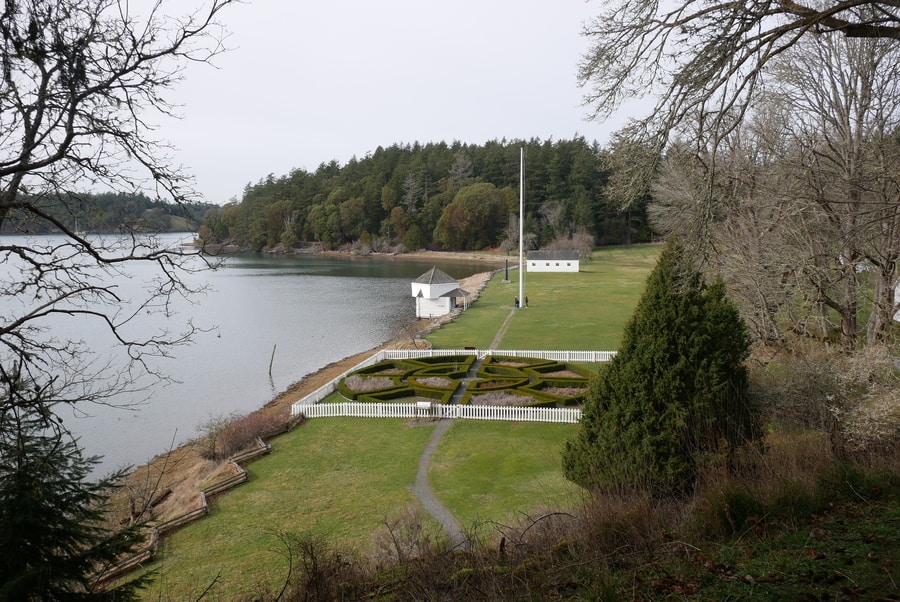
Dan and I wandered down to the grassy lawn, peaked into the shuttered buildings, and soaked in the area’s waterside views.
Though it is administered by the National Parks Service, there is no fee associated with visiting English Camp.
3. VISIT ROCHE HARBOR
Roche Harbor, San Juan Island’s second settlement, is smaller than Friday Harbor and every bit as picturesque. Anchored by the historic Haro Hotel, its delicate white architecture merits more than just a passing glance.
The town’s landmark hotel dates back to 1886, when the village served as a company town for John McMillin’s lime works. Remnants of the lime kilns are still visible near the village’s parking area.
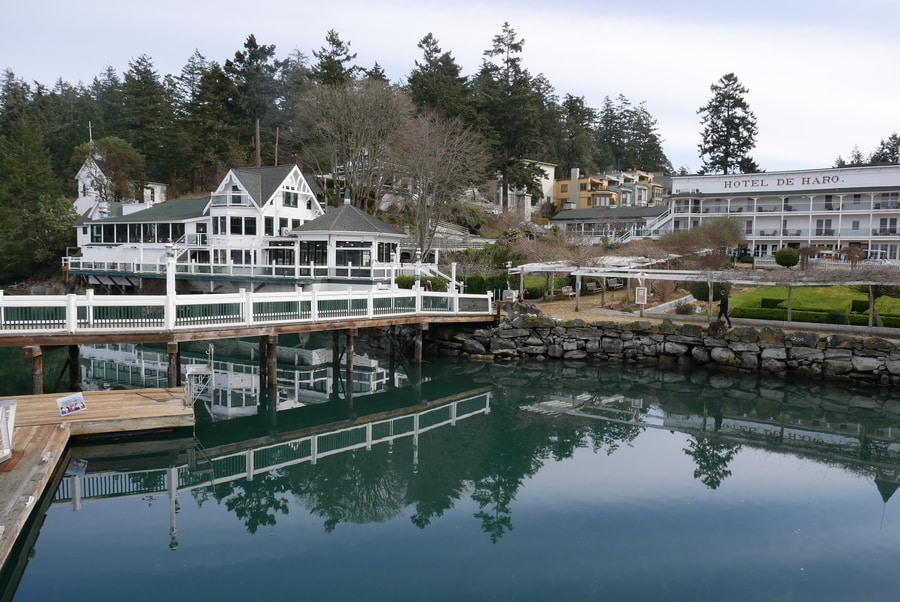
Dan and I ate lunch at the Lime Kiln Cafe, before exploring the town and its surroundings on foot. After stopping by a tiny white chapel built in 1892, we found ourselves meandering through the grounds of the San Juan Islands Sculpture Park.
The sculpture park, along with the adjacent Whimsy Forest, is a must-see Roche Harbor attraction. The 9-acre garden features more than 100 installations by Pacific Northwest artists.
Though the garden does not have a formal entrance fee, $5 donations are highly encouraged.
4. VISIT LIME KILN STATE PARK
Lime Kiln State Park clings to San Juan Island’s rocky western coastline. The area boasts a small interpretive center, short hiking trails, a restored lime kiln, and a recently-remodeled lighthouse that dates back to 1919.
Lime Kiln State Park overlooks Haro Strait and the Olympic Mountains. It is reputedly one of the best places in the world to view whales from the shoreline. Whale pods pass through the area every May through September.
An interpretive sign near the lighthouse contains a hydrophone that broadcasts ocean sounds. The hydrophone is part of the Whale Museum’s Sea Sound Remote Sensing Network. Free livestreams are available at Orcasound, 24/7.
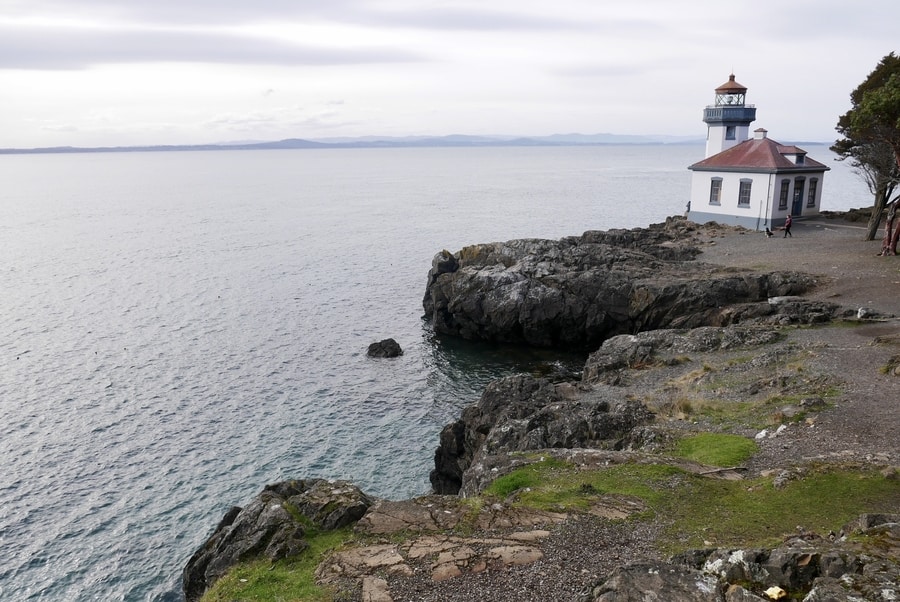
Even when there are no whales, the small state park is a must-see destination when visiting San Juan Island. Access to the area requires a $10 fee or Washington State Parks Discover Pass.
5. VISIT AMERICAN CAMP
American Camp is a defining landmark that makes up part of the San Juan Islands National Historic Site. It lies on the island’s southernmost tip, about 15 minutes from Friday Harbor.
The surrounding landscape is reminiscent to Ebey’s Landing on Whidbey Island. A series of interpretive trails leads through the area’s windswept landscapes. Though it is not as well-preserved as English Camp, the area contains remnants of an old fort and the officers’ quarters.
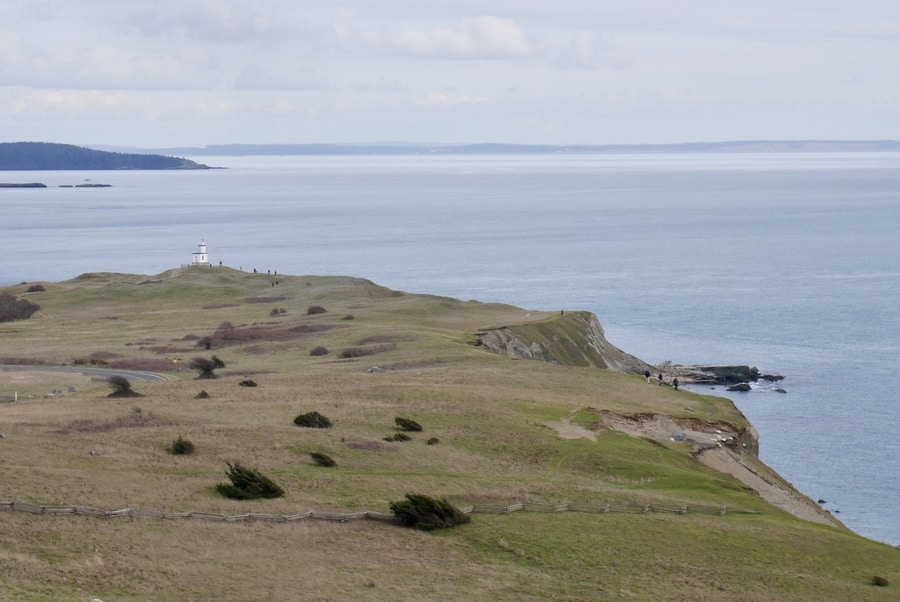
Many of the island’s best hiking trails crisscross the grassy fields and shorelines of American Camp. Noteworthy pathways lead up 285-foot Mount Finlayson and down to Jakle’s Lagoon.
In addition to boasting some of the best scenery and trails on the island, American Camp is a magnet for birdwatchers. The area is home to groups of nesting eagles and more than 200 species of migratory birds.
6. SEARCH FOR RED FOXES
While driving to South Beach, Dan and I noticed something rustling in the grass. It appeared to be a fox, but we couldn’t be 100% sure. After all, foxes can be elusive and difficult to spot in the wild.
So with our eyes peeled and camera ready, we tried to find a better vantage point, to no avail.
But half an hour later, as we set out for the Jackle’s Lagoon trailhead, we encountered a black fox in the parking area.
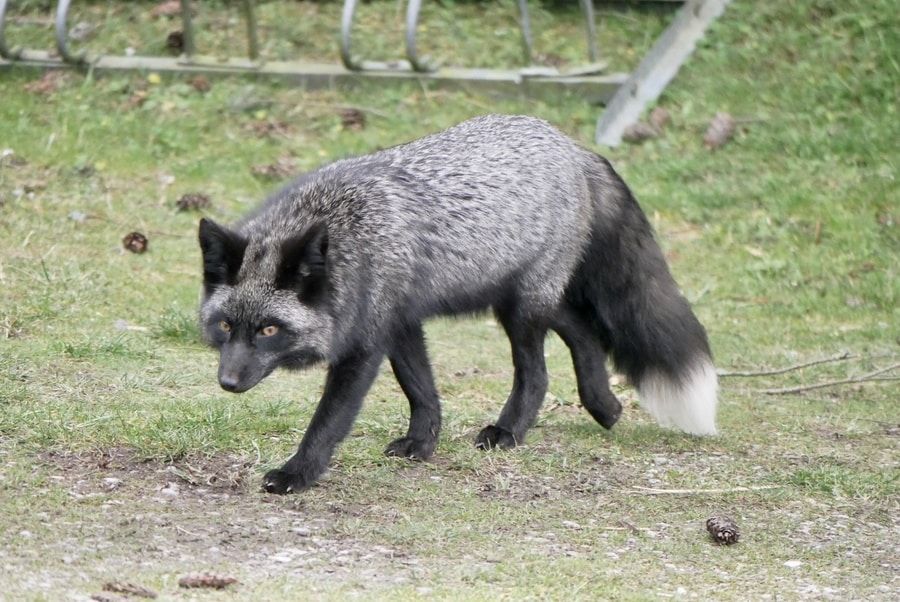
It seemed so unbothered by our presence that we began to wonder if these animals were more common than we’d imagined. When we consulted Google, we learned that foxes were introduced to the San Juan Islands to help control European rabbits (another invasive species).
While foxes can be spotted in a wide variety of the island’s habitats, they are most often spotted amongst American Camp’s windswept grasses.
Although the local foxes come in various shades of orange and black, they are all part of the same species of red fox.
WHERE TO STAY ON SAN JUAN ISLAND
San Juan Island boasts a diverse array of places to stay. The island’s accommodation options range from camping, to resorts, to boutique hotels.
The island has two campgrounds: one public and one private. The public site at San Juan County Park has a collection of first-come first-served spots that are allocated to bikers and kayakers. There is also a private campground at Lakedale Resort.
For travelers wishing to stay close to the amenities in Friday Harbor, the Discovery Inn (budget), the Trumpeter Inn (mid-range), and the Web Suites (luxury) all boast fantastic reviews.
In Roche Harbor, the historic Hotel de Haro offers visitors a chance to stay in a property that dates back to the late 1800s.
Lodging on San Juan Island tends to fill up quickly—often more than a year in advance. If you’re traveling to the area in summer, reservations are almost always necessary.
GETTING TO SAN JUAN ISLAND
A passenger ferry links Washington’s Skagit Valley with San Juan Island. The ferry ride is a highlight in itself that boasts views of the shimmering cobalt sound and its dazzling emerald islands. On clear days, the snowcapped peaks of Mount Baker and the Olympic Mountains loom above the horizon.
While buying ferry tickets weeks in advance is highly recommended during peak season, Dan and I had no trouble snagging a last-minute spot in winter.
The ferry from Anacortes to San Juan takes about an hour and a half, depending on stops. Be forewarned, however, that in the San Juans, ‘island time’ isn’t just an expression. After my first trip to Orcas, I soon learned to disregard Google Maps estimates and succumb to the unpredictable ferry schedule.
As an alternative to the ferry, Kenmore Air links Seattle with Friday Harbor. The company offers tours, charter flights, and scheduled flights to San Juan Island.
****
San Juan Island is equal parts beautiful and eccentric. The emerald fleck of land—surrounded by a glistening azure sea—feels worlds away from the frenzy of mainland America. It is a place where artists set up shop, where local establishments outnumber large chains, and where Seattle’s urban chaos feels like a distant memory.
Though we primarily visited San Juan Island in search of tranquility, Dan and I found plenty of exciting things to do in the area.
Some attractions were part of our original itinerary.
Others—including whimsical art, bushy-tailed foxes, and relics from a bizarre and oft-forgotten war—came as unexpected surprises that made our stay all the more memorable.
Did You Enjoy This Guide to San Juan Island in Washington? Pin It!
